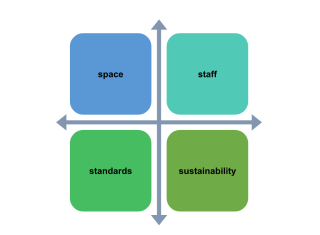The Warnath Group has launched a new website childfriendlyspaces.com to support the development, improvement, and maintenance of child-friendly spaces, spaces that are designed to help children feel safe, calm, and comfortable while they are interacting with practitioners.
While child-friendly spaces can be used by all children and adolescents (anyone under age 18), they are commonly used in working with vulnerable children, as well as those who have experienced trauma. Child-friendly spaces originated in emergency and humanitarian settings as a means to provide children whose lives have been disrupted by conflict, disaster, or other emergencies with opportunities to engage in learning and developmental activities in a safe and stimulating environment (sometimes referred to as a “safe space”). They have also been used in working with child victims of abuse and violence, and, increasingly, are being used to provide assistance and support to child trafficking victims.
Child-friendly spaces are typically in locations where practitioners interact with children in the course of their professional work. Practitioners working in child-friendly spaces may include advocates, aid workers, child protection specialists, counselors, forensic interviewers, healthcare professionals, job counselors, law enforcement, lawyers, paralegals, psychologists, researchers, school administrators, shelter staff, social assistants, social workers, teachers, therapists, and vocational trainers, among others. Practitioners may work for the government, non-governmental organizations, and international organizations.

Which practitioners are present in a child-friendly space will depend on the nature of the space and the work being done.
Creating this environment requires a multidisciplinary approach and recognition that a child-friendly space is about more than just the physical space. In many contexts, a child-friendly space will need to be developed within specific parameters (including the available resources, existing legal and protection frameworks, focus of the space, and so on) and will therefore need a tailored approach.
The Warnath Group offers professional education and advisory services in the development of child-friendly spaces, in the form of research and resources, in-person and virtual training, and technical assistance from design to implementation. We have worked in diverse settings to successfully develop child-friendly spaces for child trafficking victims. This includes the facilitation of frontline working groups and multidisciplinary teams and providing training and technical assistance for practitioners to put protocols and practices into action.
Child-friendly spaces can play an important role in the protection of child trafficking victims. They are critical to support trauma-informed initial interactions with and screening of presumed child trafficking victims. Conducting victim identification in a child-friendly space, with trained and sensitized practitioners and according to established standards, is key in creating a sense of safety that can lead to the disclosure of harm and ensure the protection of vulnerable children.
The Warnath Group model for developing, improving, and maintaining a child-friendly space for child trafficking victims is the 4S approach:

SPACE – making the physical space where practitioners interact with children a safe, child-friendly, and positive environment.
STAFF – ensuring that all practitioners who interact with child trafficking victims are trained to child trafficking, child protection, trauma-informed practices, children’s rights, and child-friendly interactions and communication.
STANDARDS – having protocols and policies in place to guide all interactions with children and upkeep of the space.
SUSTAINABILITY – maintaining child-friendly spaces over time and in response to any changes or challenges that arise.
ChildFriendlySpaces.com offers resources and materials relevant to each of these components.

